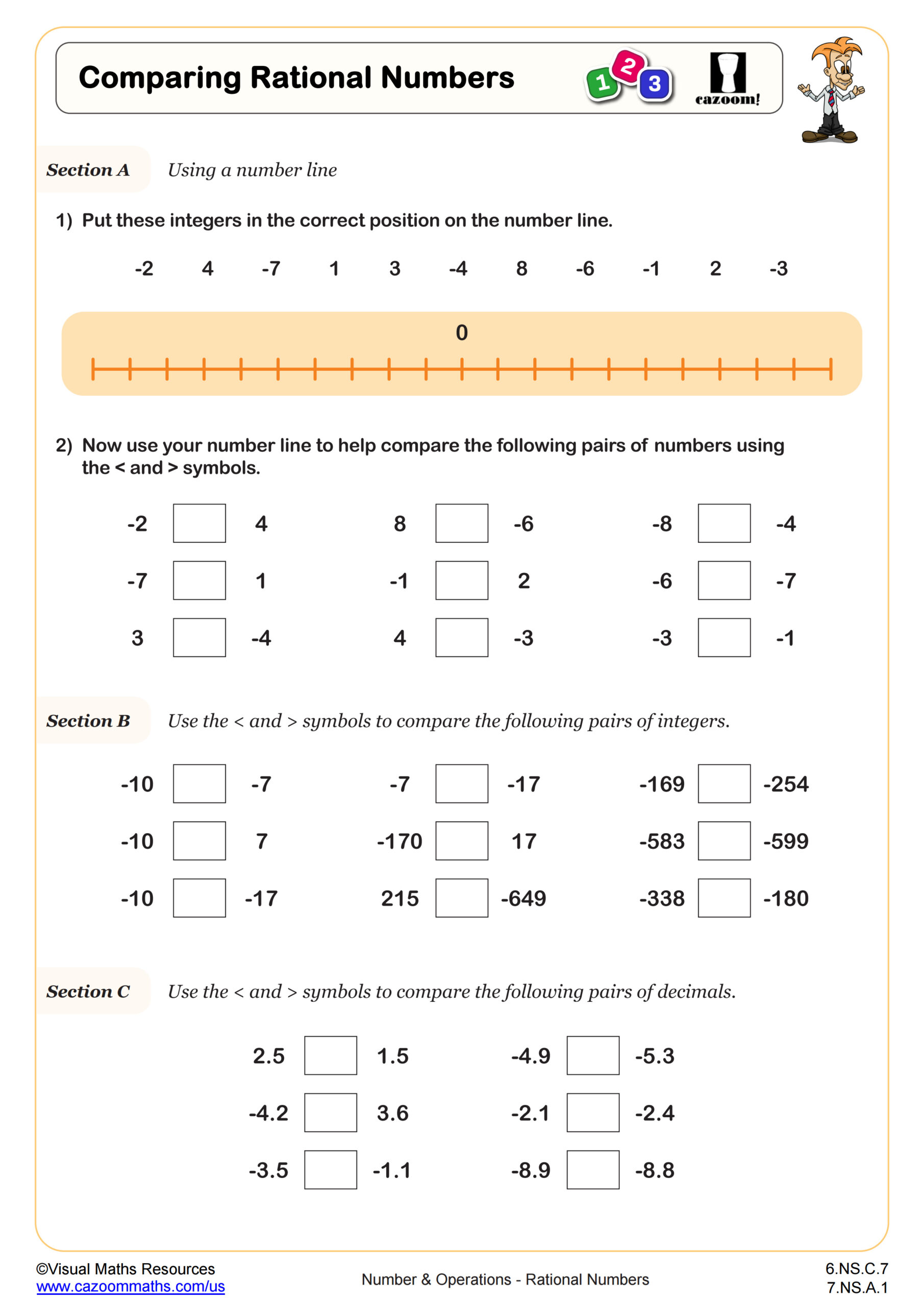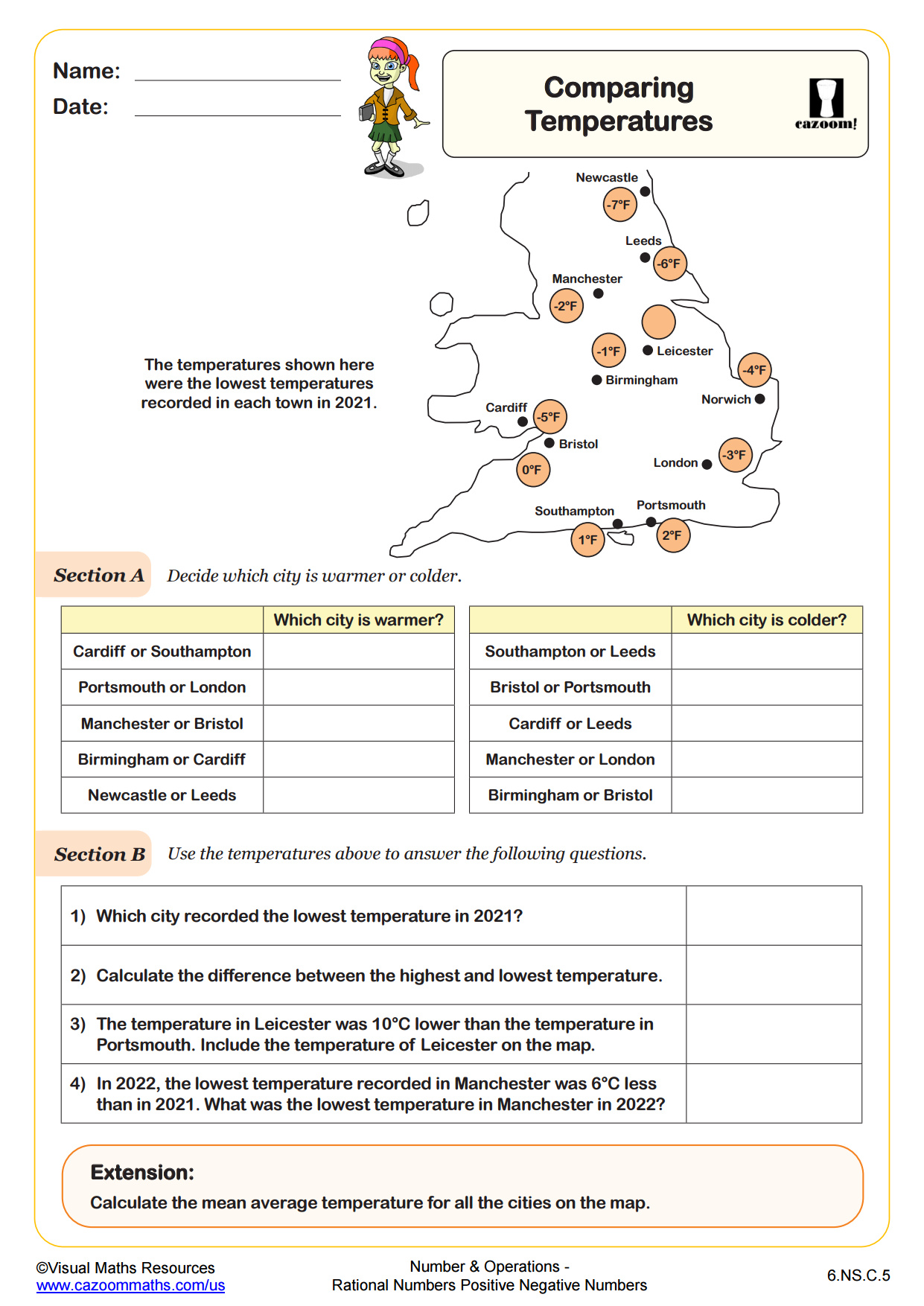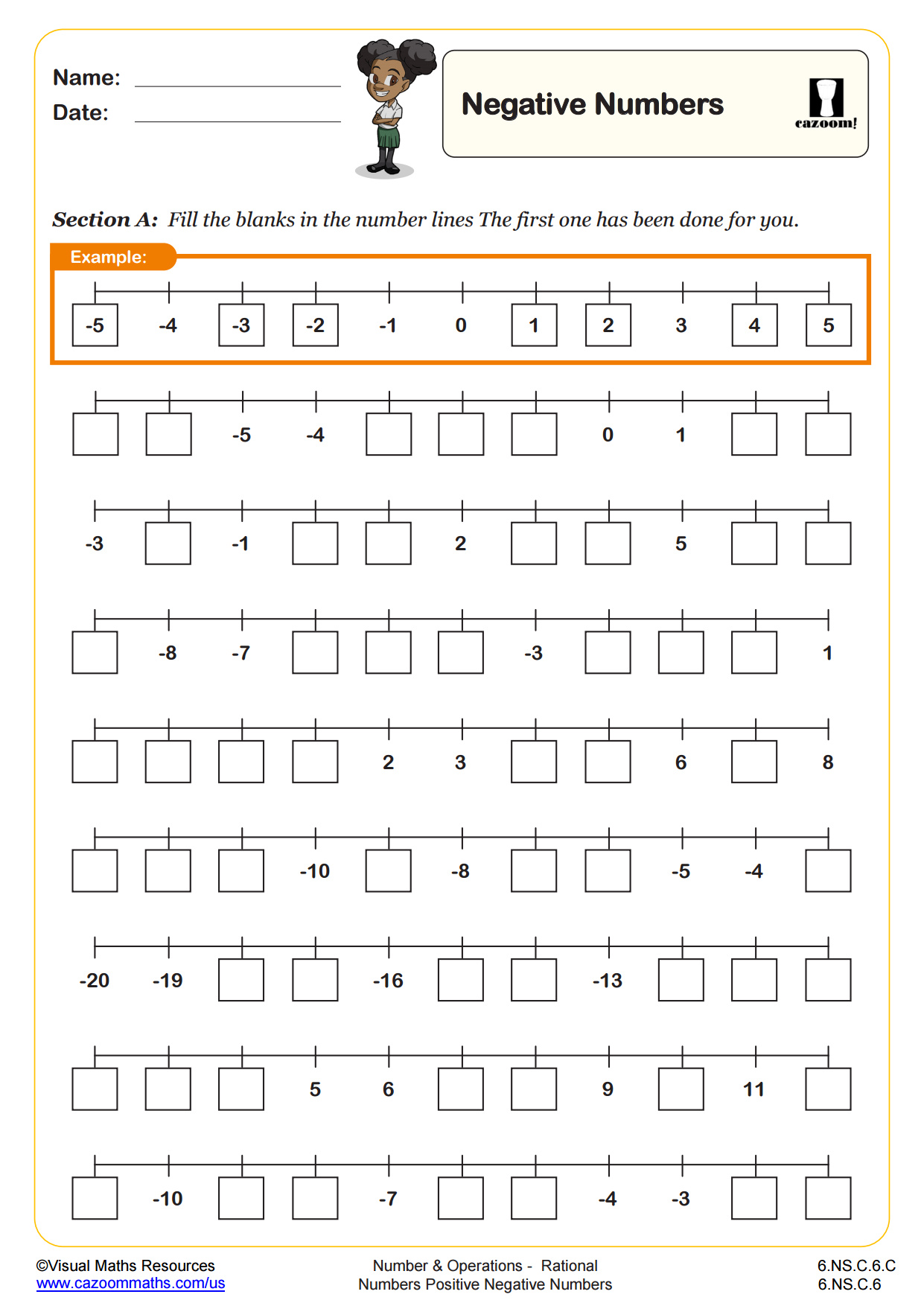Loading...
Comparing Rational Numbers WORKSHEET
Apply and extend previous understandings of addition and subtraction to add and subtract rational numbers; represent addition and subtraction on a horizontal or vertical number line diagram. a. Describe situations in which opposite quantities combine to make 0. For example, a hydrogen atom has 0 charge because its two constituents are oppositely charged. b. Understand p + q as the number located a distance |q| from p, in the positive or negative direction depending on whether q is positive or negative. Show that a number and its opposite have a sum of 0 (are additive inverses). Interpret sums of rational numbers by describing real-world contexts. c. Understand subtraction of rational numbers as adding the additive inverse, p – q = p + (–q). Show that the distance between two rational numbers on the number line is the absolute value of their difference, and apply this principle in real-world contexts. d. Apply properties of operations as strategies to add and subtract rational numbers.
Comparing Rational Numbers WORKSHEET DESCRIPTION
Before your students start calculating with integers, ensure they understand their relative size and the symmetry around zero with this worksheet.
Using a numberline, students will begin by comparing numbers between -10 and 10 using inequality symbols in section A.
In section B, students use inequality symbols to compare pairs of integers into the hundreds (e.g. -169 and -254).
Extend learners in section C, where they will compare positive and negative decimal numbers.
Next up, section D begins with an example showing students how to use a number line to find the difference between two numbers that cross zero, and extends to finding the difference between large integers and decimal numbers.
Finally section E is a problem solving section made up of three questions.




